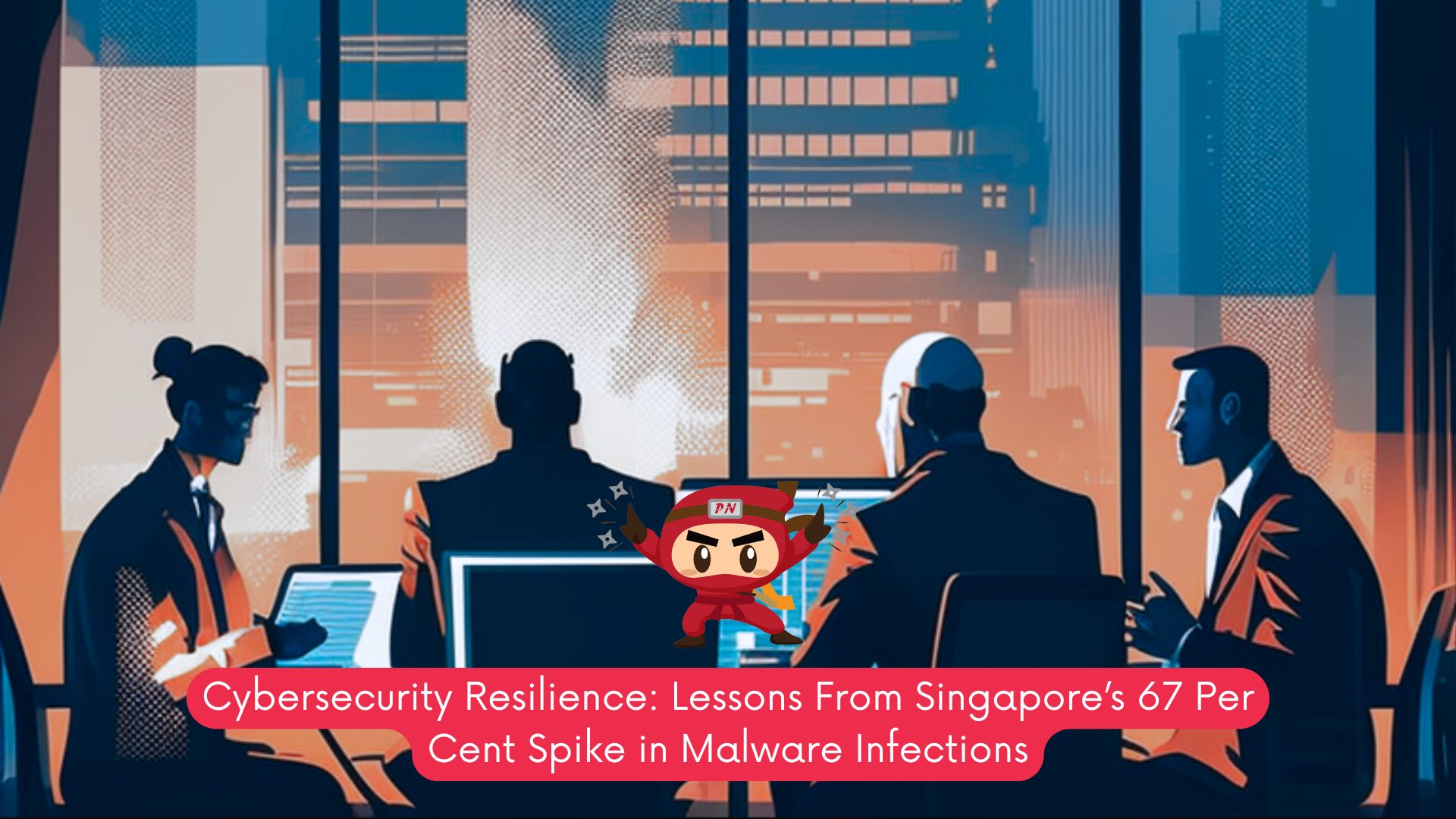KEEP IN TOUCH
Subscribe to our mailing list to get free tips on Data Protection and Cybersecurity updates weekly!







In 2024, Singapore saw a dramatic spike in malware infections, with the number of compromised systems jumping to 117,300, a 67% increase from the previous year. According to the Cyber Security Agency of Singapore (CSA), the surge was largely attributed to the failure of users to update and patch vulnerable software.
While advanced persistent threat actors continue to pose a sophisticated threat to government, corporate, and critical infrastructure, a startling revelation emerges: many of these infections could have been prevented through basic cyber hygiene.
This trend exposes a significant gap in cybersecurity resilience, demonstrating that even as Singapore strengthens its digital economy, preparedness and recovery capabilities remain uneven across organisations.
The CSA report underscores a truth that is often overlooked: the most advanced security tools are rendered ineffective when basic updates are neglected.
Malware infections exploiting outdated software highlight a broader issue: the human element in cybersecurity. Despite clear guidance on patch management and the availability of remediation measures for well-known malware strains, many users continue to neglect essential updates. This is not merely a technical oversight. It reflects a cultural challenge in fostering a proactive approach to cybersecurity resilience. Organisations may invest heavily in defensive technologies and frameworks, yet a single unpatched system can serve as a gateway for attackers, undermining the entire ecosystem.
Human behaviour is further implicated in emerging threats such as vishing. Cybercriminals increasingly exploit social engineering techniques, impersonating IT support or other trusted figures to extract sensitive information from unsuspecting employees.
The rapid increase in vishing incidents globally, from just two detected cases in January 2024 to 93 in December, illustrates the ongoing vulnerability of individuals in the cyber landscape. Achieving true cybersecurity resilience requires embedding awareness and accountability across all levels of an organisation, emphasising that resilience is as much about people as it is about technology.
Beyond routine malware, Singapore faces an escalating threat from state-sponsored actors and advanced persistent threats. Groups such as TAG-43 and UNC3886 have targeted government agencies, critical infrastructure, and political organisations across Southeast Asia. These actors are highly sophisticated, leveraging network edge devices and relay networks to evade detection and complicate attribution.
The CSA notes that Singapore has experienced a more than fourfold increase in suspected APT attacks from 2021 to 2024, signalling a growing need for coordinated response strategies and operational resilience.
Cybersecurity resilience in this context is not merely about preventing breaches, but ensuring that organisations can detect, respond to, and recover from attacks with minimal disruption. Effective resilience requires continuous testing of incident response plans, comprehensive monitoring of network activity, and cross-sector collaboration. Singapore’s national exercises, such as the 11-day Exercise Cyber Star, demonstrate the importance of large-scale drills in stress-testing organisational preparedness and reinforcing a culture of cyber readiness among critical infrastructure stakeholders.
While human error and state-sponsored threats dominate headlines, other cyber risks are evolving rapidly. Distributed denial-of-service attacks have surged in volume and sophistication, often orchestrated through powerful botnets enhanced by generative artificial intelligence. Cloudflare’s analysis reveals that countries in Asia account for 60 per cent of the most attacked locations globally, with Singapore ranking as the third-largest source of DDoS attack traffic. These attacks not only disrupt services but also exploit the very infrastructure designed to support the nation’s digital economy, including data centres and cloud platforms.
The rise of AI-driven attacks represents a new frontier in cybersecurity resilience. Traditional defensive measures may no longer suffice when adversaries can automatically scale attacks and adapt tactics in real time. Organisations must adopt a dynamic approach, integrating predictive analytics, behavioural monitoring, and adaptive defence mechanisms to maintain continuity. Cybersecurity resilience, therefore, is an ongoing, iterative process that demands continuous investment in both technology and human capital.
The surge in malware infections serves as a stark reminder that complacency has real consequences. Failure to patch vulnerabilities, neglecting staff training, and relying solely on legacy defensive frameworks all contribute to operational risk. The CSA report illustrates that even well-established organisations with advanced tools remain vulnerable when resilience measures are not systematically implemented. Moreover, underestimating recovery timelines and overestimating incident response capabilities can exacerbate the impact of cyberattacks, leading to prolonged service outages, reputational damage, and regulatory repercussions.
Cybersecurity resilience cannot be a reactive effort. Building robust defences requires anticipating threats, simulating potential breach scenarios, and ensuring that response protocols are well-understood across departments. Resilience is measured not by the absence of attacks but by the ability to maintain operational continuity and rapidly recover from disruptions, whether caused by malware, vishing, or state-sponsored intrusions.
In a digital environment as interconnected as Singapore’s, organisations must view cybersecurity resilience as a strategic imperative rather than an operational afterthought. Privacy Ninja provides a comprehensive suite of services to bridge the gap between confidence and capability. Our Vulnerability Assessment and Penetration Testing (VAPT) services enable organisations to simulate real-world attacks, identifying weak points in infrastructure, policies, and employee awareness. Data Breach Management services ensure rapid containment and investigation of incidents. At the same time, our DPO-as-a-Service offering guarantees compliance with the Personal Data Protection Act and reinforces data governance practices.
By combining technical expertise with operational guidance, Privacy Ninja enables organisations to move beyond theoretical preparedness. We emphasise continuous testing, realistic simulations, and staff training to embed cybersecurity resilience into organisational DNA. For businesses seeking to protect themselves from the rising tide of malware infections, APT attacks, and AI-driven threats, partnering with Privacy Ninja ensures that resilience is practical, measurable, and enduring. In an era where digital systems underpin economic and social activity, fostering cybersecurity resilience is not optional; it is essential to survival and long-term success.
The 67% increase in malware infections in Singapore during 2024 is a wake-up call for all organisations, from small enterprises to critical infrastructure operators. Cybersecurity resilience, encompassing preparedness, response, and recovery, is more vital than ever. Human factors, state-sponsored threats, AI-driven attacks, and operational complacency all contribute to the complex cyber threat landscape. Addressing these challenges requires coordinated efforts, continuous testing, and a culture of accountability. With the right strategies and expert support, organisations can transform resilience from a theoretical concept into a tangible capability, ensuring that Singapore’s digital ecosystem remains robust, secure, and capable of withstanding future challenges.